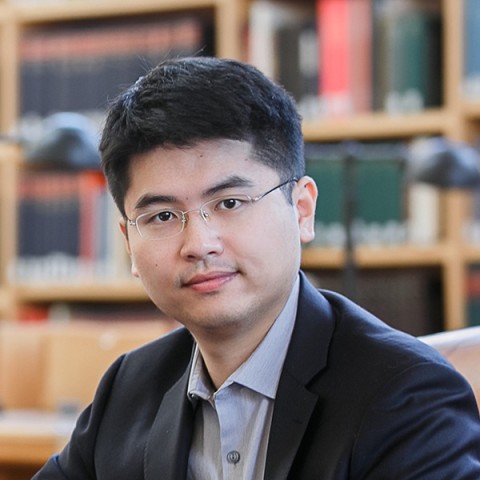A new tool developed by researchers at the Pritzker School of Molecular Engineering (PME) can help reveal the origin of electronic states in designed materials—a step toward harnessing the materials for future quantum technology applications.
The tool, developed by Asst. Prof. Shuolong Yang and his team, will help researchers better understand magnetic topological insulators: materials with special surface features that could make them integral to quantum information science technologies.

Through a technique called layer-encoded frequency-domain photoemission, researchers send two laser pulses into a layered material. The resulting vibrations, coupled with the measurement of energy, allows researchers to piece together a “movie” that shows how electrons move in each layer.
“In our daily life, when we want to better understand a material — to understand its composition or if it’s hollow — we knock on it,” Yang said. “This is a similar approach at a microscopic level. Our new technique allows us to ‘knock and listen’ to layered materials, and it allowed us to show that one particular magnetic topological insulator works differently than theory predicts.”
The results were published in Nature Physics.
Understanding layered materials is important because many materials scientists now design and create materials at the atomic level in a layer-by-layer process, combining two or more materials together to create a new material. Building these materials from the ground up allows them to create materials with new properties for future technologies.
When scientists created the two-layered magnetic topological insulator (MnBi2Te4)(Bi2Te3) by combining a magnetic material with a non-magnetic material, they developed a material with exotic quantum properties. Electrons move around the perimeter of the surface while both maintaining their energy and quantum properties. This supercurrent could potentially be used to transmit information stored in qubits in future quantum computers.
Because these layers are so thin — on the order of a few nanometers — traditional material characterization tools, like spectroscopy, can’t distinguish between the layers. While the electrons should ideally be moving around the surface of the magnetic material, previous experiments done by other groups showed that perhaps they instead zip around the non-magnetic material.
Result defies theoretical predictions
To understand what happens in the two different layers, the new tool first sends out a femtosecond (or a quadrillionth of a second) infrared pulse. This short pulse causes the layers to vibrate differently, based on their composition. Then, researchers send out a second ultraviolet laser pulse, which can measure the energy and momentum of electrons in the material. Together, the two measurements can record electron motion through time.
“It is essentially a movie in the femtosecond timescale,” Yang said. “And it allows us to tell which electrons are from which layer.”
When they applied the technique to the material (MnBi2Te4)(Bi2Te3), they found that the special electronic state was not in the magnetic layer, which defies theoretical predictions. But because the material would have drastically improved quantum properties if this supercurrent lie within the magnetic layer, Yang and his team motivated the research community at large to go back to the drawing board to re-engineer the material.